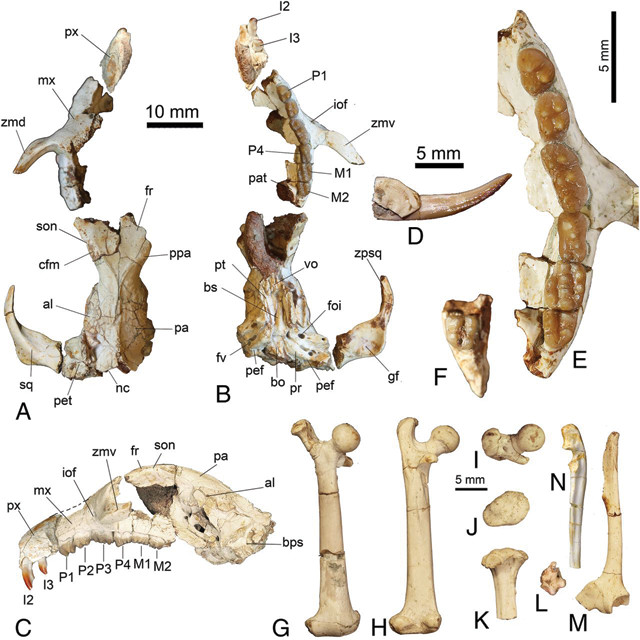
by Rachel Crowell Tuesday, July 3, 2018

A newly discovered mammal, Litovoi tholocephalos, belongs to a previously unknown genus. Credit: Csiki-Sava et al., Proceedings of the National Academy of Sciences, 2018.
A host of fossils has been discovered near the Romanian town of Haţeg, including 15 species of Late Cretaceous dinosaurs — some of them dwarf dinosaurs — and enormous pterosaurs with 12-meter wingspans, prompting the establishment of the Haţeg Country Dinosaurs Geopark in 2005.
And recently, researchers there unearthed a “reasonably complete and well-preserved skeleton” of an enigmatic mammal, also from the Late Cretaceous. The fossil represents a new mammal species and the first of its genus. Researchers dubbed it Litovoi tholocephalos, meaning “the leader with the domed skull,” in a new study in Proceedings of the National Academy of Sciences.
During the Late Cretaceous, Haţeg, and its surroundings were isolated as an island in the Tethys Sea. The new animal, thought to have evolved from earlier island-dwelling, multituberculate (rodent-like) mammals, had strange characteristics: a domed skull, an unusually small brain and large olfactory bulbs. The researchers suggested that the traits were likely consequences of the “island effect,” an evolutionary phenomenon in which species living in insular environments develop novel adaptations that often aren’t seen in their close evolutionary relatives or mainland contemporaries.
The team, led by Zoltán Csiki-Sava of the University of Bucharest, compared the new animal to 533 species of mammals and closely related nonmammals, finding that Litovoi has a substantially lower brain-to-body size ratio than other multituberculates. The ratio was so low, in fact, that it fails to meet the threshold typically used to classify mammal species.
Yet, this island-dweller may have had outstanding sensory capabilities. Relative to brain size, its olfactory bulbs — neural structures related to the sense of smell — are larger than those of almost every other mammal the team studied. “Not all regions of the brain were tiny, and … it likely had [a] particularly sharp sense of smell and keen eye control, and possibly efficient hearing,” the researchers wrote.
© 2008-2021. All rights reserved. Any copying, redistribution or retransmission of any of the contents of this service without the expressed written permission of the American Geosciences Institute is expressly prohibited. Click here for all copyright requests.